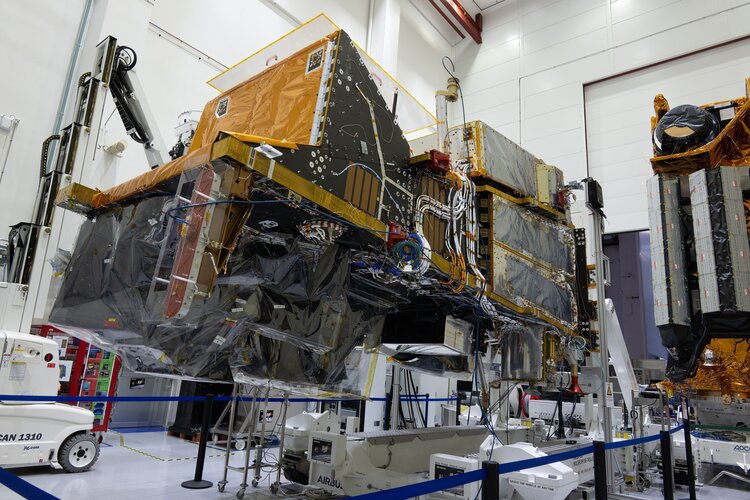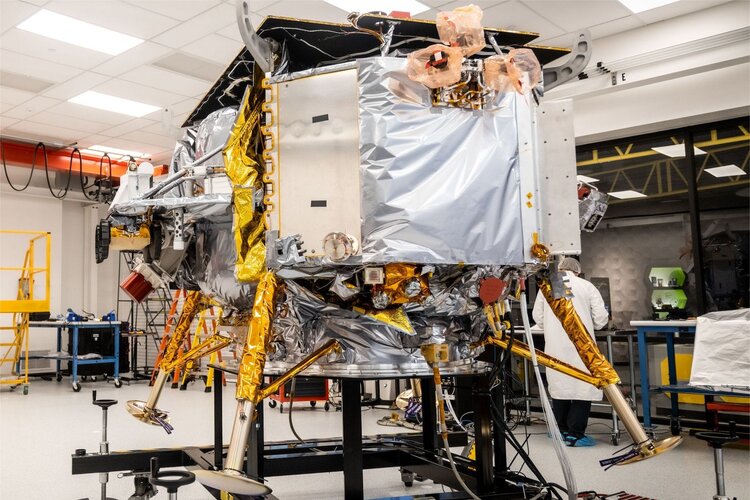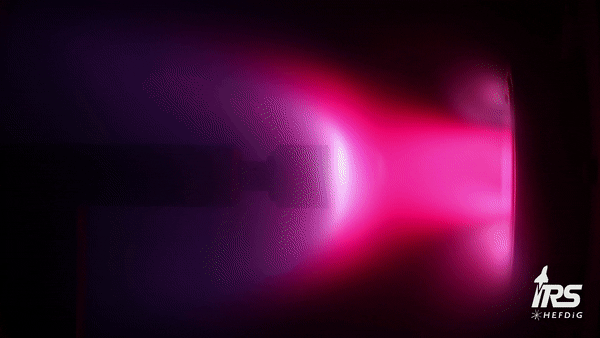
Copernical Team
Blast from the past: Gamma-ray burst strikes Earth from distant exploding star
 An enormous burst of gamma rays, detected by ESA's Integral space telescope, has struck Earth. The blast caused a significant disturbance in our planet's ionosphere. Such disturbances are usually associated with energetic particle events on the Sun but this one was the result of an exploding star almost two billion light-years away. Analysing the effects of the blast could provide information ab
An enormous burst of gamma rays, detected by ESA's Integral space telescope, has struck Earth. The blast caused a significant disturbance in our planet's ionosphere. Such disturbances are usually associated with energetic particle events on the Sun but this one was the result of an exploding star almost two billion light-years away. Analysing the effects of the blast could provide information ab The Long Wait
 There was a long delay between Flight 52 and Flight 53, and a deviation from the published Flight 53 plan. I will address both in this blog post. First, the Flight 53 delay was the direct result of a decision by the team to fly Ingenuity out of telecom communications range with the rover. One may question the wisdom of this, but there are good reasons to do so.
When plotting a traversal pa
There was a long delay between Flight 52 and Flight 53, and a deviation from the published Flight 53 plan. I will address both in this blog post. First, the Flight 53 delay was the direct result of a decision by the team to fly Ingenuity out of telecom communications range with the rover. One may question the wisdom of this, but there are good reasons to do so.
When plotting a traversal pa US embarks on ambitious quantum technology endeavor
 In a landmark initiative, the U.S. Department of Energy (DOE), along with other strategic partners, has announced the inaugural participants in the Quantum and Space Collaboration. This pioneering effort, which includes the DOE, Department of Defense (DOD), NASA, Infleqtion, Nebula Space Enterprises, and Accenture Federal Services, seeks to harness quantum technologies for major advancements in
In a landmark initiative, the U.S. Department of Energy (DOE), along with other strategic partners, has announced the inaugural participants in the Quantum and Space Collaboration. This pioneering effort, which includes the DOE, Department of Defense (DOD), NASA, Infleqtion, Nebula Space Enterprises, and Accenture Federal Services, seeks to harness quantum technologies for major advancements in Here Comes the Sun: Perseverance Readies for Solar Conjunction
 Perseverance wrapped up science activities this week as the team focused on getting the rover in position for solar conjunction, a few week period roughly every two Earth years when Earth and Mars are on opposite sides of the Sun. To avoid potential interference of radio signals by the Sun's ionized gas, engineers do not actively command Mars spacecraft during this period and rather send up a lo
Perseverance wrapped up science activities this week as the team focused on getting the rover in position for solar conjunction, a few week period roughly every two Earth years when Earth and Mars are on opposite sides of the Sun. To avoid potential interference of radio signals by the Sun's ionized gas, engineers do not actively command Mars spacecraft during this period and rather send up a lo Europe's quantum decade extends into space
 Europe - and the world - is in the midst of the 'quantum decade': a period in which the peculiar properties of matter that manifest at the very tiniest of scales are being transformed from mere scientific curiosities into the basis of practical technologies and products. The result? Major leaps forward in communications, navigation, computing and environmental sensing.
The same is true in
Europe - and the world - is in the midst of the 'quantum decade': a period in which the peculiar properties of matter that manifest at the very tiniest of scales are being transformed from mere scientific curiosities into the basis of practical technologies and products. The result? Major leaps forward in communications, navigation, computing and environmental sensing.
The same is true in Southern Launch to host HyImpulse's Pioneering SR75 launch in South Australia
 In a significant development for the global aerospace industry, German rocket manufacturer HyImpulse is set to launch its SR75 sounding rocket from the Koonibba Test Range near Ceduna in South Australia in early 2024. This event marks a pivotal moment in space exploration, showcasing the potential of international collaboration and innovative propulsion technologies.
The SR75, which employ
In a significant development for the global aerospace industry, German rocket manufacturer HyImpulse is set to launch its SR75 sounding rocket from the Koonibba Test Range near Ceduna in South Australia in early 2024. This event marks a pivotal moment in space exploration, showcasing the potential of international collaboration and innovative propulsion technologies.
The SR75, which employ Bouncing comets could deliver building blocks for life to exoplanets
 How did the molecular building blocks for life end up on Earth? One long-standing theory is that they could have been delivered by comets. Now, researchers from the University of Cambridge have shown how comets could deposit similar building blocks to other planets in the galaxy.
In order to deliver organic material, comets need to be travelling relatively slowly - at speeds below 15 kilom
How did the molecular building blocks for life end up on Earth? One long-standing theory is that they could have been delivered by comets. Now, researchers from the University of Cambridge have shown how comets could deposit similar building blocks to other planets in the galaxy.
In order to deliver organic material, comets need to be travelling relatively slowly - at speeds below 15 kilom MetOp Second Generation weather satellite pair show off

Having satellites in different types of orbit is essential to delivering data to forecast the weather accurately. With the first Meteosat Third Generation Imager satellite safely in geostationary orbit since December 2022, it’s also time to focus on its polar-orbiting cousin, the MetOp Second Generation mission. And now, for the first time, two MetOp Second Generation satellites have been brought together to stand side-by-side for testing.
Mini mass spectrometer ready for Moon mission
 Image:
Image:
The Astrobotic Peregrine lunar lander, due to launch to the Moon later this year, carrying the PITMS instrument on the payload deck on its left side.
PITMS stands for Peregrine Ion-Trap Mass Spectrometer, and it is a device that will sniff out molecules close to the Moon's surface to chart the composition of the lunar exosphere, the particles buzzing around its surface that don't quite make up an atmosphere.
The Peregrine lander is aiming for a lunar touchdown in Sinus Viscositatis near the Gruithuisen volcanic domes, on the northern lunar hemisphere. It is the first time that a spacecraft will land
Fall into an ice giant’s atmosphere
 Image:
Fall into an ice giant’s atmosphere
Image:
Fall into an ice giant’s atmosphere 































